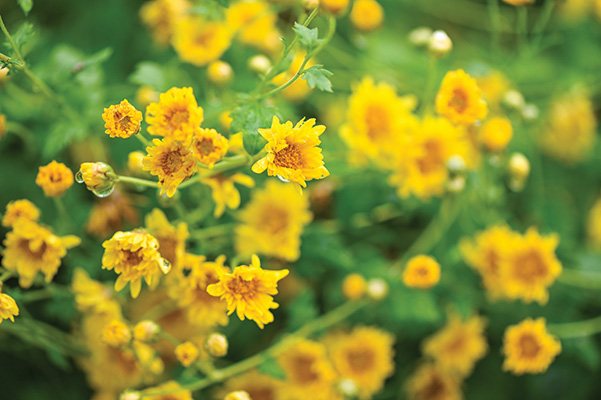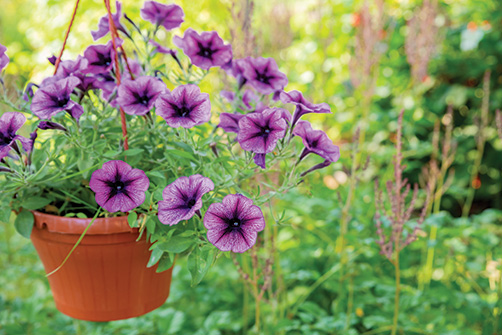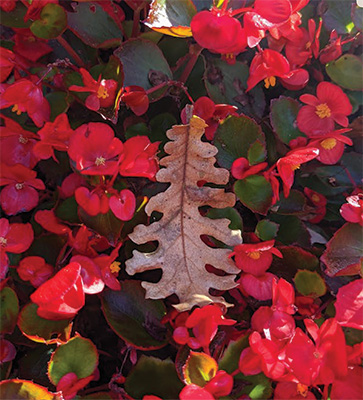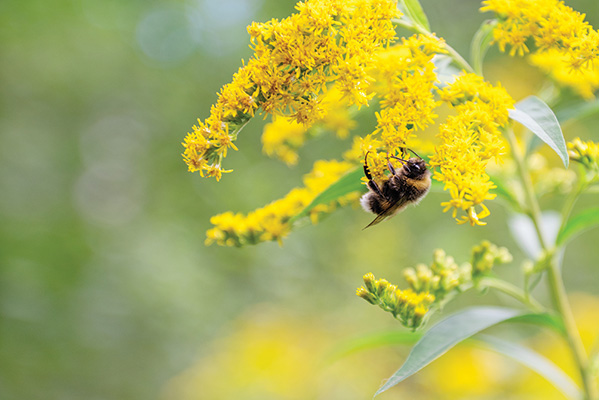“Come said the leaves to the wind one day,
Come o’er the meadows and we will play,
Put on your dresses, scarlet and gold,
For summer is gone, and the days grow cold”
– George Eliot
Although we on the Coast are energized by cooler temperatures, we love our gardens to be lush with colorful flowers. Fortunately, our mild winters mean we are blessed to have something blooming most months of the year.
WHAT’S IN BLOOM NOW?

- Annuals: Alyssum, calendula, chrysanthemums, dianthus, gomphrena, impatiens, volas, pansy, pentas, petunias, salvia, snapdragon, wax begonia
- Perennials (until frost): Butterfly ginger, cigar flower, fire spike, goldenrod, Mexican sage, milkweed, rudbeckia, swamp sunflower
- Shrubs and Trees: Beautyberry, cassia, kumquat, lion’s ear, persimmon, pyracantha (berries), sasanqua camellia, sourwood, sweet gum, sweet olive, yaupon (berries)

WHAT SHOULD I PLANT?
- Annuals: In addition to those listed above: ornamental cabbage, poppy, sweet pea
- Bulbs & Perennials: grape hyacinth, narcissus
- Shrubs and trees: Most hardy trees and shrubs: Bald cypress, banana shrub, camellia, Chinese Pistache, fringe tree, ilex, leatherleaf mahonia, oak tree, saucer magnolia, Taiwan cherry, yellow anise
- Vegetables: Broccoli, Brussels sprout, cabbage, carrot, cauliflower, greens, onion, radish, turnip
TOP GARDENING TIPS FOR NOVEMBER:
- Plants and lawns still need water. If weather is dry, apply three-quarter inch once every couple of weeks.
- Prepare beds for winter annual flowers by adding compost or other soil amendments. For a vegetable bed, prepare at least two weeks before planting your vegetables. This allows time for amendments to become integrated into the soil.
 Sow wildflower seeds in well-prepared beds free from weed competition. Southern mixtures will be most successful. This includes black-eyed susans, coreopsis and gaillardia.
Sow wildflower seeds in well-prepared beds free from weed competition. Southern mixtures will be most successful. This includes black-eyed susans, coreopsis and gaillardia.- When forcing bulbs to flower early, select firm, disease-free bulbs from a reputable nursery. Plant two-thirds of bulb in growing medium, leaving one-third of bulb exposed above the soil. Water well, and place in a cool, shaded or dark place for eight to 12 weeks. Bring potted bulbs into well-lit area; water lightly and watch for growth. After blooming, cut stalks off, remove bulb from pot and allow to dry. Plant outside when frost danger has passed. Amaryllis, daffodils and crocuses can be successfully forced for beautiful winter blooms indoors.
- Tulips must be refrigerated (no fruit in same refrigerator) for 12 weeks to chill, as our South Mississippi weather can’t be relied upon to stay cold enough. After chilling, plant in pots or in the ground outdoors.
- Move houseplants away from drafts and cold areas.
- Apply herbicides to turf, as winter weeds are beginning to germinate. Always follow label recommendations.
- If desired, overseed lawn with ryegrass until mid- November.
- Set out suet feeders for woodpeckers and seed for other birds. Remember to offer a water source and shelter for wintering birds visiting our area.



